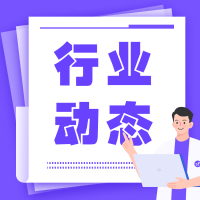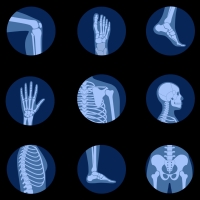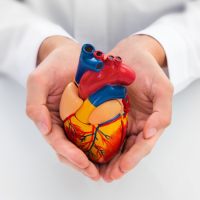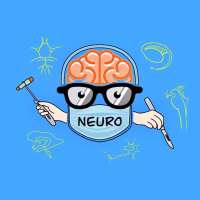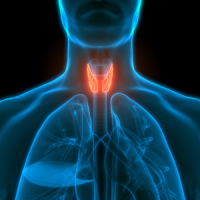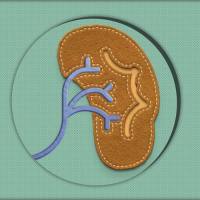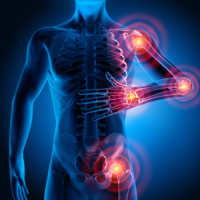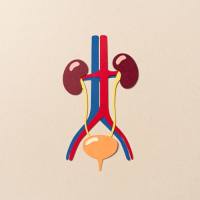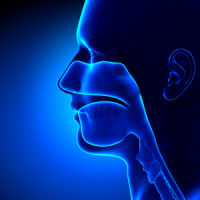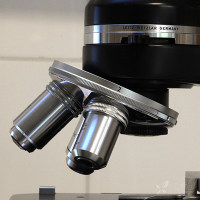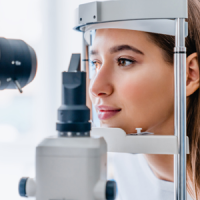【指南】下腰痛的循证指南:来自美国国立指南库
Guideline Title
Guideline for the evidence-informed primary care management of low back pain.
Bibliographic Source(s)
| Toward Optimized Practice. Guideline for the evidence-informed primary care management of low back pain. Edmonton (AB): Toward Optimized Practice; 2009 Mar 2. 21 p. [19 references] |
Major Recommendations
Note: This guideline has been updated. The National Guideline Clearinghouse (NGC) is working to update this summary. The recommendations that follow are based on the previous version of the guideline.
The criteria used to determine the categorization of the recommendations (Do, Not Recommended, and Do Not Know) are defined at the end of the "Major Recommendations" field. In addition, an explanation of the evidence source (i.e., types of evidence and corresponding "seed" guidelines) are also available.
直接给大家看这份指南的核心内容,主要分几大部分:
1、腰痛的预防 Prevention
| Recommendation | Evidence Source | |
| Do | Patient Education Practitioners should provide information or patient education material on back pain prevention and care of the healthy back that emphasizes patient responsibility and workplace ergonomics. (See the companion document - Patient brochure in the "Availability of Companion Documents" field) The evidence is unclear on what quantity, intensity, or media is optimal for delivering this information. (See the companion documents - patient information sheets ["Acute low back pain" and "Chronic low back pain"] and patient brochure which are available in the "Availability of Companion Documents" field.) Practitioners should emphasize that acute low back pain is nearly always benign and generally resolves within 1 to 6 weeks. Patient information and educational material based on a biomedical or biomechanical model (anatomical and "traditional" posture information) can convey negative messages about back pain and is not recommended. | SR (G2 & G5) |
| Do | Physical Activity Physical activity is recommended. There is insufficient evidence to recommend for or against any specific kind of exercise, or the frequency/intensity of training. | SR (G5) |
| Do Not Recommend | Shoe Insoles/Orthoses The use of shoe insoles or orthoses is not recommended for prevention of back problems. | RCT (G5) |
| Do Not Know | Lumbar Support/Back Belts Neither lumbar supports nor back belts appear to be effective in reducing the incidence of low back pain. | RCT (G3) |
| Do Not Know | Manipulative Treatment No evidence was found to support recommending regular manipulative treatment for the prevention of low back pain. | RCT (G5) |
| Do Not Know | Mattresses There is insufficient evidence to recommend for or against any specific mattresses for prevention of low back pain. | RCT (G5) |
| Do Not Know | Furniture - Chairs There is insufficient evidence to recommend for or against any specific chairs for prevention of low back pain. | NRT (G5) |
| Do Not Know | Risk Factor Modification There is no good evidence for or against risk factor modification (e.g., smoking cessation, reduced alcohol consumption, weight reduction) for the prevention of low back pain. | SR (G3) |
2、急性、亚急性(Acute & Subacute)
| Recommendation | Evidence Source | |
| Do | Diagnostic Triage The first qualified practitioner with the ability to do a full assessment (i.e., history-taking, physical and neurological examination, and psychosocial risk factor assessment) should assess the patient and undertake diagnostic triage. (See Appendix A in the original guideline document for summary of red and yellow flags and companion documents, "Clinical assessment for psychosocial yellow flags" and "What can be done to help somebody who is at risk?" Also available in the "Availability of Companion Documents" field.) If serious spinal pathology is excluded, manage as non-specific low back pain as per the reassessment and treatment recommendations below. | SR (G2 & G4) |
| Do | Emergent Cases Patients with red flags (See Appendix A in the original guideline document for red flag definitions) indicating a high likelihood of serious underlying pathology should be referred for immediate evaluation and treatment to an appropriate resource depending on what is available in your region (e.g., emergency room, relevant specialist.) | EO (G2) |
| Do | Cases Requiring Further Evaluation Schedule an urgent appointment with a physician if any of the red flags are present. (See Appendix A in the original guideline document for red flag definitions.) | EO (G2) |
| Do | Referral Patients with disabling back or leg pain, or significant limitation of function including job related activities should be referred within 2-6 weeks to a trained spinal care specialist such as a physical therapist, chiropractor, osteopathic physician or physician who specializes in musculoskeletal medicine. Consult or refer to a spinal surgeon if the patient has neuromotor deficits that persist after 4 to 6 weeks of conservative treatment or sciatica for longer than 6 weeks with positive straight leg raise. | EO (G2) |
| Do | Psychosocial Risk Factors Primary care evaluation should include assessment for psychosocial risk factors ("yellow flags") and a detailed review if there is no improvement. (See Appendix A in the original guideline document for summary of yellow flags and companion documents, "Clinical assessment for psychosocial yellow flags" and "What can be done to help somebody who is at risk?" Also available in the "Availability of Companion Documents" field.) Psychosocial risk factors (yellow flags) include fear, financial problems, anger, depression, job dissatisfaction, family problems, or stress. | SR (G2 & G4) |
| Do | Laboratory Testing If cancer or infection is suspected, order the appropriate blood tests. In the absence of red flags, no laboratory tests are recommended. | EO (G2) |
| Do | Reassessment of Patients Whose Symptoms Fail to Resolve Reassess patients whose symptoms are not resolving. Follow-up in one week if pain is severe and has not subsided. Follow-up in three weeks if moderate pain is not improving. Follow-up in 6 weeks if not substantially recovered. If serious pathology (red flag) is identified, consider further appropriate management. Identify psychosocial risk factors (yellow flags) and address appropriately. (See Appendix A in the original guideline document for definitions of red and yellow flags and companion documents "Clinical assessment for psychosocial yellow flags" and "What can be done to help somebody who is at risk?" for chronicity and increased disability. Also available in the "Availability of Companion Documents" field.) | G (G2 & G4) |
| Do | Information and Reassurance Educate the patient and describe the benign long-term course of low back pain. Provide education materials that are consistent with your verbal advice, to reduce fear and anxiety and emphasize active self-management. (See the companion document - Patient Information Sheet in the "Availability of Companion Documents" field.) | NRT (G2 & G4) |
| Do | Cold Packs or Heat In the first 72 hours recommend cold packs (ice), after that, alternate cold and heat as per patient's preference. Heat or cold should not be applied directly to the skin, and not for longer than 15 to 20 minutes. Use with care if lack of protective sensation. | EO (G2) |
| Do | Advice to Stay Active Patients should be advised to stay active and continue their usual activity, including work, within the limits permitted by the pain. Physical exercise is recommended. Patients should limit/pace any activity or exercise that causes spread of symptoms (peripheralization). Self-treating with an exercise program not specifically designed for the patient may aggravate symptoms. | SR (G2 & G4) |
| Do | Return to Work Encourage early return to work. Refer workers with low back pain beyond 6 weeks to a comprehensive return-to-work rehabilitation program. Effective programs are typically multidisciplinary and involve case management, education about keeping active, psychological or behavioral treatment and participation in an exercise program. Working despite some residual discomfort poses no threat and will not harm patients. | SR (G2) |
| Do | Analgesia Prescribe medication, if necessary, for pain relief preferably to be taken at regular intervals. First choice acetaminophen; second choice non-steroidal anti-inflammatory drugs (NSAIDs). Only consider adding a short course of muscle relaxant (benzodiazepines, cyclobenzaprine, or antispasticity drugs) on its own, or added to NSAIDs, if acetaminophen or NSAIDs have failed to reduce pain. Serious adverse effects of NSAIDs include gastrointestinal complications (e.g., bleeding, perforation and increased blood pressure). Drowsiness, dizziness and dependency are common adverse effects of muscle relaxants. (See Medication Table in Appendix B in the original guideline document.) | SR (G4 & G7) |
| Do | Narcotic Analgesics There is evidence that the effect of opioid or compound analgesics is similar to NSAID treatment of acute low back pain. Oral opioids may be necessary to relieve severe musculoskeletal pain. It is preferable to administer a short-acting agent at regular intervals, rather than on a pain-contingent basis. Ongoing need for opioid analgesia is an indication for reassessment. In general, opioids and compound analgesics have a substantially increased risk of side effects compared with acetaminophen alone. (See Medication Table in Appendix B in the original guideline document.) | SR (G7) |
| Do | Spinal Manipulation Patients who are not improving may benefit from referral for spinal manipulation provided by a trained spinal care specialist such as a physical therapist, chiropractor, osteopathic physician or physician who specializes in Musculoskeletal (MSK) medicine. Risk of serious complication after spinal manipulation is low (estimated risk: cauda equina syndrome, less than 1 in one million). Current guidelines contraindicate manipulation in people with severe or progressive neurological deficit. | SR (G4) |
| Do | Multidisciplinary Treatment Programs Encourage early return to work. Refer patients who have difficulty returning to work to a multidisciplinary treatment program. | SR (G4) |
| Do Not Recommend | Back Schools Back schools are not recommended for treatment of acute low back pain. Back schools are programs of variable duration and intensity that include education about the anatomy and function of the back as well as training on specific therapeutic exercises. | SR (G4) |
| Do Not Recommend | Traction Do not use traction. Traction has been associated with significant adverse events. Passive treatment modalities such as traction should be avoided as mono-therapy and not routinely be used because they may increase the risk of illness behaviour and chronicity. The following adverse effects from traction were reported: reduced muscle tone, bone demineralization, and thrombophlebitis. | SR (G4 & G7) |
| Do Not Recommend | Massage Therapy Massage therapy is not recommended as a treatment for acute low back pain. | SR (G4) |
| Do Not Recommend | Transcutaneous Electrical Nerve Stimulation (TENS) TENS is not recommended for the treatment of acute non-specific low back pain. | SR (G4) |
| Do Not Recommend | Diagnostic Imaging For non-specific acute low back pain (no red flags), diagnostic imaging tests, including x-ray, computed tomography (CT) and magnetic resonance imaging (MRI), are not indicated. In the absence of red flags, routine use of x-rays is not justified due to the risk of high doses of radiation and lack of specificity. | SR (G4) |
| Do Not Recommend | Oral and Epidural Steroids Oral Steroids Do not use oral steroids for acute non-specific low back pain | EO (G2) |
| Do Not Recommend | Epidural Steroids Do not use epidural steroid injections for acute non-specific low back pain without radiculopathy. It is reasonable to use epidural steroid injections for patients with radicular pain for greater than 6 weeks who have not responded to first line treatments. Adverse effects are infrequent and include headache, fever, subdural penetration and more rarely epidural abscess and ventilatory depression. | SR (G4) |
| Do Not Recommend | Bed Rest Do not prescribe bed rest as a treatment. If the patient must rest, bed rest should be limited to no more than 2 days. Prolonged bed rest for more than 4 days is not recommended for acute low back problems. Bed rest for longer than two days increases the amount of sick leave compared to early resumption of normal activity in acute low back pain. There is evidence that prolonged bed rest is harmful. | SR (G2, G4 & G7) |
| Do Not Know | Acupuncture The evidence does not allow firm conclusions about the effectiveness of acupuncture. | SR (G7) |
| Do Not Know | Therapeutic Exercise There is insufficient evidence to recommend for or against any specific kind of exercise, or the frequency/intensity of training. Clinical experience suggests that supervised or monitored therapeutic exercise may be useful following an individualized assessment by a spine care specialist. For patients whose pain is exacerbated by physical activity and exercise, refer to a physical therapist, chiropractor, osteopathic physician, or physician who specializes in MSK medicine for therapeutic exercise recommendations. Patients should discontinue any activity or exercise that causes spread of symptoms (peripheralization). Self-treating with an exercise program not specifically designed for the patient may aggravate symptoms. | SR (G2 & G4) |
3、慢性(Chronic)
| Recommendation | Evidence Source | |
| Do | Diagnostic Tests In chronic low back pain, x-rays of the lumbar spine are very poor indicators of serious pathology. Hence, in the absence of clinical red flags spinal x-rays are not encouraged. More specific and appropriate diagnostic imaging should be performed on the basis of the pathology being sought (e.g., dual energy x-ray absorptiometry [DEXA] scan for bone density, bone scan for tumors and inflammatory diseases). However, lumbar spine x-rays may be required prior to more sophisticated diagnostic imaging, for example prior to performing a CT or MRI scan. In this case, the views should be limited to anterior-posterior (AP) and lateral (LAT) without requesting oblique views. Oblique view X-rays are not recommended; they add only minimal information in a small percentage of cases, and more than double the patient's exposure to radiation. | NRT (G2) |
| Do | Laboratory Testing If cancer or infection is suspected, order the appropriate blood tests. In the absence of red flags, no laboratory tests are recommended. | EO (G2) |
| Do | Self-management Programs Where available, refer to a structured community-based self-management group program for patients who are interested in learning pain coping skills. These programs are offered through chronic disease management and chronic pain programs. Self-management programs focus on teaching core skills such as self monitoring of symptoms to determine likely causal factors in pain exacerbations or ameliorations, activity pacing, relaxation techniques, communication skills, and modification of negative "self talk" or catastrophizing. These programs use goal setting and "homework assignments" to encourage participants' self confidence in their ability to successfully manage their pain and increase their day-to-day functioning. Most community-based programs also include exercise and activity programming that are also recommended. Where structured group programs are not available, refer to a trained professional for individual self-management counselling. | G (G6) |
| Do | Physical Exercise and Therapeutic Exercise Patients should be encouraged to initiate gentle exercise and gradually increase their exercise level within their pain tolerance. Sophisticated equipment is not necessary. Low cost alternatives include unsupervised walking and group exercise programs such as those offered though chronic disease management programs. The outcome for group exercise is likely better in terms of peer support, giving people improved confidence and empowering patients to manage with less medical intervention. If exercise persistently exacerbates their pain, patients should be further assessed by a knowledgeable physician to determine if further investigation, medications, other interventions, and/or consultation are required. The exercise program should also be assessed by a knowledgeable physical therapist or qualified exercise specialist if the exercises exacerbate the patient's pain. Some studies reported mild negative reactions to the exercise program such as increased low back pain and muscle soreness in some patients. | SR (G1 & G6) |
| Do | Active Rehabilitation Active rehabilitation program includes:
| SR (G2) |
| Do | Massage Therapy Massage therapy is recommended as an adjunct to an overall active treatment program. | SR (G6) |
| Do | Acupuncture Acupuncture is recommended as a stand-alone therapy or as an adjunct to an overall active treatment program. No serious adverse events were reported in the trials. The incidence of minor adverse events was 5% in the acupuncture group. | SR (G6) |
| Do | TENS The research evidence does not support the use of TENS as a sole treatment for chronic low back pain. However, clinical experience suggests that TENS may be useful in select patients for pain control to avoid or reduce the need for medications. A short trial (2 to 3 treatments) using different stimulation parameters should be sufficient to determine if the patient will respond to this modality. Skin irritation is a common adverse event. | SR (G6) |
| Do | Acetaminophen and NSAIDs Acetaminophen and NSAIDs are recommended. No one NSAID is more effective than another. NSAIDs are associated with mild to moderately severe side effects such as: abdominal pain, diarrhea, edema, dry mouth, rash, dizziness, headache, tiredness. There is no clear difference between different types of NSAIDs. (See Medication Table in Appendix B in the original guideline document.) | SR (G6) |
| Do | Muscle Relaxants Some muscle relaxants (e.g., cyclobenzaprine) may be appropriate in selected patients for symptomatic relief of pain and muscle spasm. Caution must be exercised with managing side effects, particularly drowsiness, and also with patient selection, given the abuse potential for this class of drugs. (See Medication Table in Appendix B in the original guideline document.) | SR (G6) |
| Do | Antidepressants Tricyclic antidepressants have a small to moderate effect for chronic back pain, at much lower doses than might be used for depression. Possible side-effects include drowsiness and anticholinergic effects. (See Medication Table in Appendix B in the original guideline document.) | SR (G6) |
| Do | Opioids Long-term use of weak opioids, like codeine, should only follow an unsuccessful trial of non-opioid analgesics. In severe chronic pain, opioids are worth careful consideration. Long acting opioids can establish a steady state blood and tissue level that may minimize the patient's experience of increased pain from medication withdrawal experienced with short acting opioids. Careful attention to incremental changes in pain intensity, function, and side effects is required to achieve optimal benefit. Because little is known about the long-term effects of opioid therapy, it should be monitored carefully. Opioid side-effects (including headache, nausea, somnolence, constipation, dry mouth, and dizziness) should be high in the differential diagnosis of new complaints. A history of addiction is a relative contraindication. Consultation with an addictions specialist may be helpful in these cases. Consult the Canadian Guideline for Safe and Effective Use of Opioids for Chronic Non-Cancer Pain endorsed by the College of Physicians & Surgeons of Alberta (CPSA). (Also see Medication Table in Appendix B in the original guideline document.) | SR (G6) |
| Do | Multidisciplinary Treatment Program Referral to a multidisciplinary chronic pain program is appropriate for patients who are significantly affected by chronic pain and who have failed to improve with adequate trials of first line treatment. Get to know the multidisciplinary chronic pain program in your referral area and use it for selected cases of chronic low back pain. | SR (G6) |
| Do | Prolotherapy Prolotherapy is only appropriate in carefully selected and monitored patients who are participating in an appropriate program of exercise and/or manipulation/mobilization. The most commonly reported adverse events were temporary increases in back pain and stiffness following injections. Some patients had severe headaches suggestive of lumbar puncture, but no serious or permanent adverse events were reported. | SR (G6) |
| Do | Epidural Steroid Injections For patients with leg pain, epidural steroid injections can be effective in providing short-term pain relief. Transient minor complications include: headache, nausea, pruritis, increased pain of sciatic distribution, and puncture of the dura. (See Medication Table in Appendix B in the original guideline document.) | SR (G6) |
| Do | Behavioural Therapy/Progressive Muscle Relaxation Where group programs are not available, consider referral for individual cognitive-behavioural treatment provided by psychologist or other qualified provider. | SR (G6) |
| Do | Referral Refer patients with severe persistent disability who have not responded to an exercise-based active rehabilitation program to interdisciplinary rehabilitation, a multidisciplinary chronic pain program or a physiotherapy clinic with consultation services. | G (G2 & G6) |
| Do Not Know | Spinal Manipulation There is insufficient evidence to recommend for or against spinal manipulative therapy. | SR (G6) |





